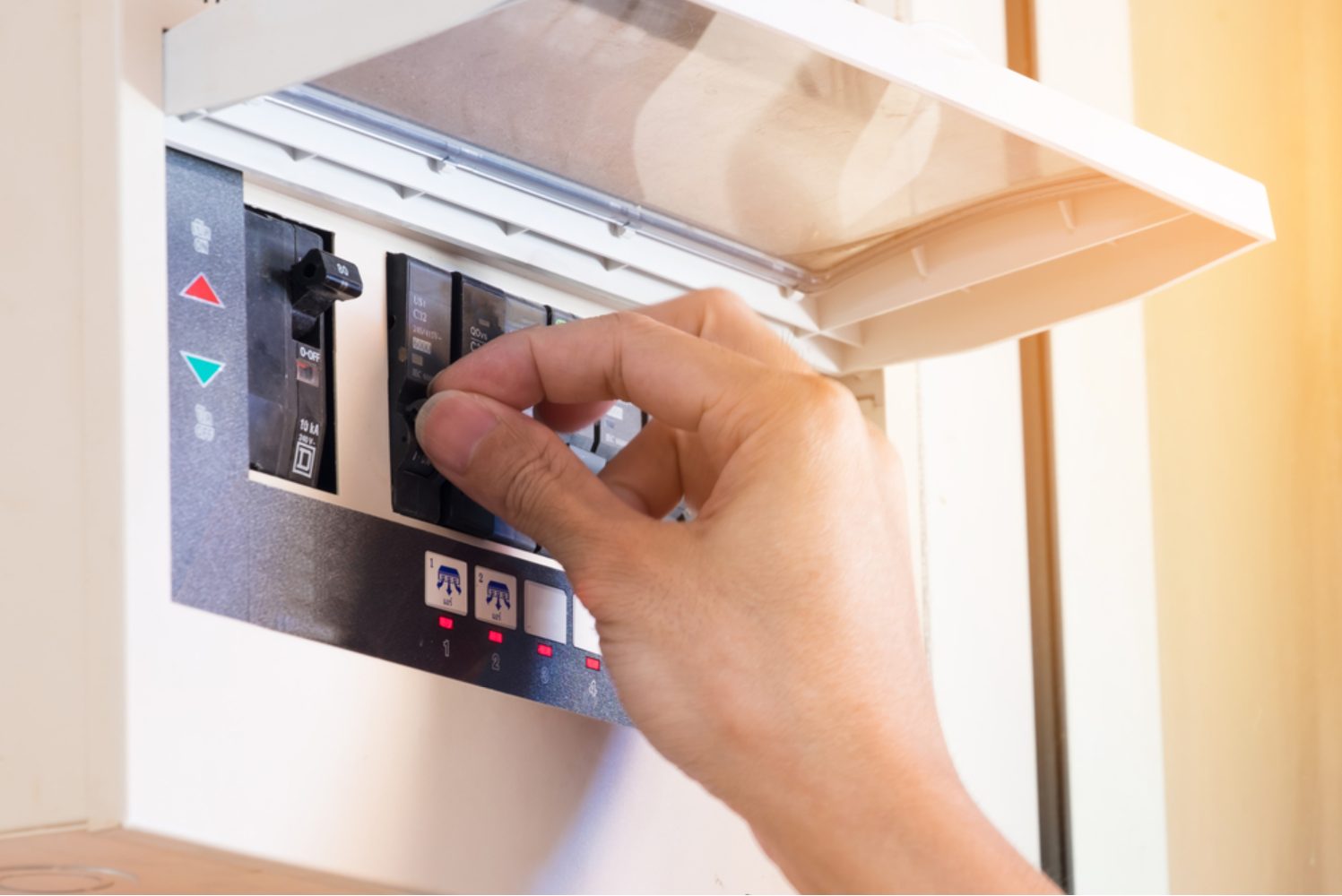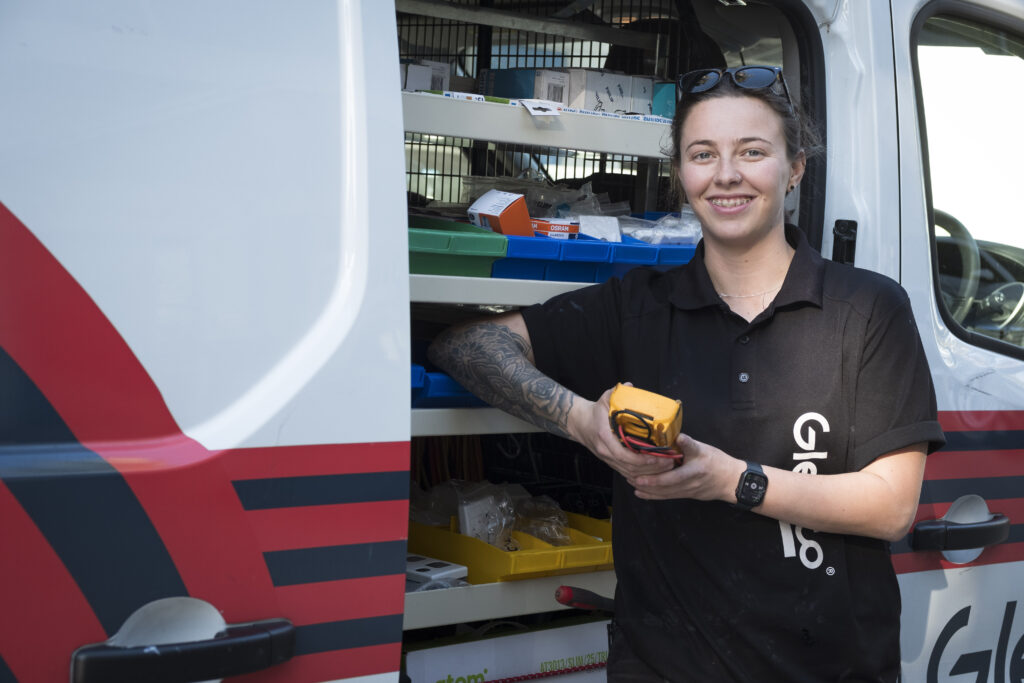It can be a confusing moment when a circuit breaker trips. Lights turn off as uncooked toast pops up. It can even take a minute to realise what has happened. If you’re a homeowner or renter in Australia, chances are it’s a problem you’ve encountered yourself. Most Australian homes feature a system of electrical circuits controlled and protected by circuit breakers. Breakers are all located in the main service panel box within the home.
These circuit breakers can trip as a safety precaution when there’s a problem with the flow in a particular circuit. A tripped circuit breaker can result in one powerpoint going down, or the whole house can become powerless. Whatever the case, knowing what to do when a circuit breaker keeps tripping can be helpful knowledge to get your essentials back on.
Below we go through the process of what to do when your circuit breaker trips. It’s important to have a torch with a working battery somewhere in your house. If this happens at night time, it can make the process a lot easier as you will see everything clearly.
How Do You Fix A Tripped Circuit Breaker
Once you know where the service panel box is, follow the steps below to reset your tripped circuit breaker.
1. Switch off all equipment and devices affected by the power outage
The first step should be to switch off all equipment and devices (including lighting) affected by the circuit breaker. Turn them to the off position at the powerpoints. It’s possible that the circuit breaker has tripped because of an overload of supply. Having many appliances turned on in one area can cause that. Switching everything off in the connected area can help the circuit breaker to reset in the following stages.
2. Find your circuit panel and determine the relevant breaker
A circuit panel is a box in your house that hosts the circuit breaker switches. Once you’ve found your circuit panel, search for the relevant breaker. It will be the switch (or switches) that are now in the OFF position. It’s usually the only switch in the OFF position in the sea of ON switches.
3. Flip the appropriate breaker back on
Once you’ve located the relevant breaker switch, you can turn the switch from OFF to ON. This will reset the circuit. You can now turn the appliances and devices back on. At this point, the power outage should be resolved. However, if it happens again shortly after, it could be a sign of a more significant issue.
Why Does My Circuit Breaker Keep Tripping?
If your circuit breaker keeps tripping, it could be a problem with your circuit panel or an electrical issue. General wear and tear to your circuit breaker is expected and normal. As this builds up, enough damage over time can require a new circuit breaker to be installed. If it does keep tripping, you can request a service electrician to assess the problem.
Preventing Your Circuit Breaker From Tripping
Limiting the number of appliances and devices that are turned on can reduce the chances of a breaker tripping. High power consuming appliances like air conditioners, fridges and Christmas lighting can cause a circuit breaker to trip much easier. Alternatively, you can spread the use of appliances over more areas to reduce the areas’ electricity flow.
Lights and appliances that are dimming, buzzing or warm can signal an oversupply of power. If you notice this and turn the device off, you can prevent a trip before it happens.
Having an electrician rewire old circuits can prevent trips at the source of the problem. Worn and damaged wires can be a catalyst for circuit breakers tripping. By installing new ones that sit firmly in the terminal, you can reduce the chances of a breaker trip.
Possible Reasons Why Your Circuit Breaker Keeps Tripping
There are several reasons why a circuit breaker keeps tripping.
1. Short Circuit
A short circuit is an overload of current flowing through the circuit. It happens when an active wire makes contact with a neutral wire. A short circuit causes a large flow of current through an unexpected pathway or ‘short’ route. The breaker trips as a safety precaution to stop the current from continuing running through the pathway. As well as tripping, it can also cause a fuse to blow or create sparks.
Short circuits are often caused by a loose connection to the wires in the panel box. Rats and insects can also chew through the wire insulation and cause a short circuit.
2. Overloaded Circuit
An overloaded circuit occurs when your circuit has an overwhelming amount of amps coming through. When excessive power flows through one circuit, it can cause the circuit breaker to trip. Tripping is a safety precaution that causes a power outage rather than allowing the circuit to overwork. If it is overworked, it’s at risk of catching alight and causing a fire.
3. Ground Fault
A ground fault occurs when the hot wire carrying the current comes in contact with a grounded object. The grounded object can often be the metal circuit panel box or the grounded part of an appliance. With no resistance between the wire and the ground, the current flow surges towards this pathway. The circuit breaker trips at this point to stop the high electrical flow. Ground faults can be a serious hazard. If a person is in contact with the wire, they could be a part of this least resistance pathway and be given an electrical shock.
Ground faults can be caused by water dripping onto an electrical box, as water acts as a conductor of electricity. Worn wires that become loose can also cause ground faults.
Request a Service from Glenco
If your circuit breaker keeps tripping it could be the right time to request a service from your local electricians. The reason that a circuit breaker has tripped is not instantly recognisable. As there are different trip causes that each represent different issues and risks, it can be important to have the problem inspected by an expert. We’re always on schedule for electrical works. Schedule your electrical service now.







